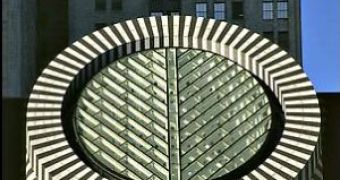Can you tell what's going on inside a public building just by looking at it? Is it a city hall, an art museum, a library, or a theatre? A study shows that in case of American public buildings function does not appear to determine their form.
Jack Nasar, an expert in urban and regional planning in Ohio, together with Arthur Stamps from the Institute of Environmental Quality in San Francisco and Kazunori Hanyu from Nihon Univerity, Tokyo, have published a study on this subject. They have shown 12 photographs of San Francisco public buildings to 160 people from three distant cities (Columbus, Ohio; Montreal; Tokyo).
Nasar and his colleagues have randomly selected 4 functions from a list of many functions that a public building can serve, and then they have random picked from telephone book examples of public buildings, 3 for each function (city hall, art museum, library, theatre). Then, one of them visited the 12 sites and took pictures. The pictures were edited afterwards in order to get rid of any signage. The 160 participants were asked to guess what function each photographed building has. If the participants would have guessed randomly they would have answered correctly in 25% of the cases. In reality they answered correctly in 32% of the cases, only slightly better. In other words, the shape of San Francisco public buildings reveals their function very poorly.
For example, the participants often believed that city halls were libraries, and museums were considered city halls or theaters rather than museums. The study has also shown that there is no difference between American, Canadian, and Japanese perception. They were all equally tricked by the buildings' shapes.
The team has also checked to see whether the buildings were initially designed for purposes other than what they were currently being used. They have discovered that, although some of them were indeed reused, this didn't prove to be relevant: reuse or original use didn't make much difference in conveying function through form, Nasar said.
And why would it be of any importance whether form conveyed function? Nasar has mentioned that other studies have shown people already "read" buildings to judge the status of people who live or work inside, and to determine if the buildings are in a safe neighborhood. "Buildings convey meaning, whether they are meant to or not," Nasar said. "So it makes sense that buildings be designed to indicate their use. But our results suggest it doesn't often happen."

 14 DAY TRIAL //
14 DAY TRIAL //